
Click to read more
I know you’ve seen them.
The LinkedIn posts that go like this.
One single line after another.
It starts with a surprising personal story.
An unexpected workplace anecdote.
Struggle and triumph immortalized.
In bizarre business-oriented free verse.
It’s meant to impart an inspirational lesson.
In the end, it delivers some tired cliché.
People are calling it “broetry.”
You’ve just read a broem.
Look familiar? Broetry—a term coined by Bloomberg writer Lorcan Roche Kelly and popularized by news outlets like BuzzFeed and Reuters—is everywhere on LinkedIn. And it’s making writers mad as heck.
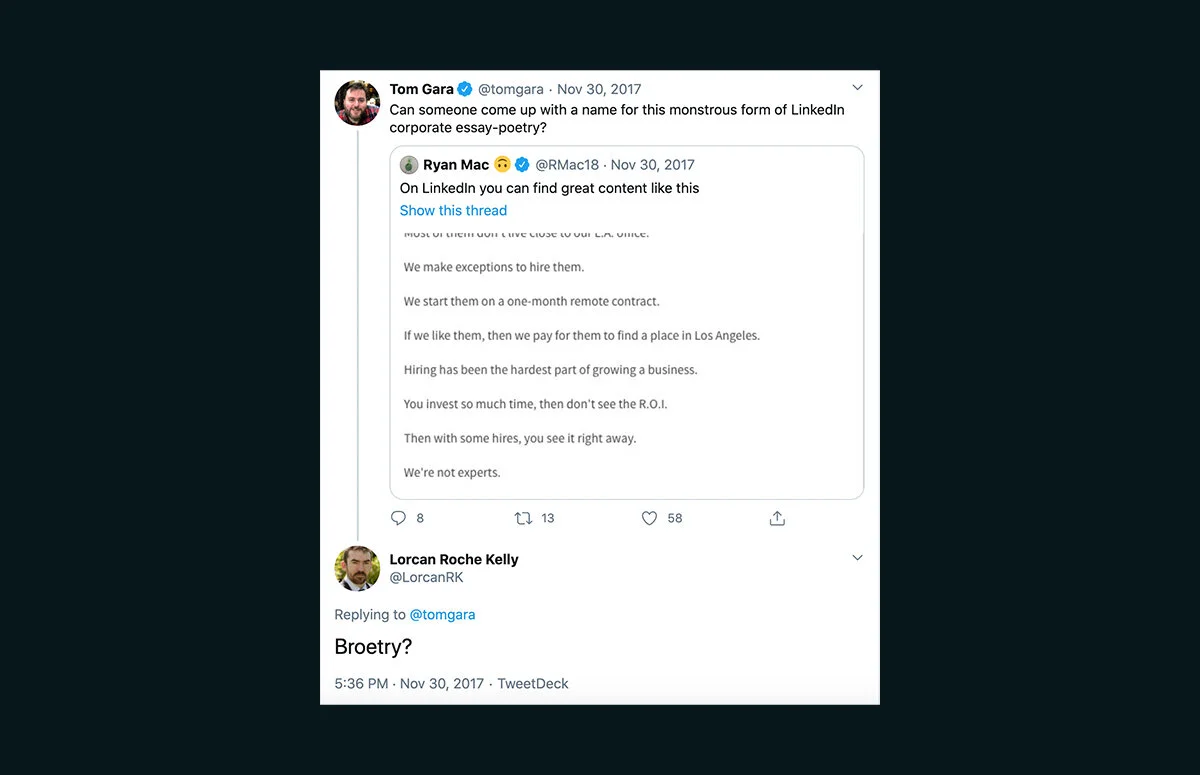
Cole Schafer, writer at Honey Copy, cuts straight to the chase. “I’m not sure where the hell it came from. But, recently on LinkedIn, I’ve noticed this phenomenon where entrepreneurs, growth-hackers, and digital marketers are posting poorly-written self-help-like ‘prose’ littered with clichés and vague blanketed statements.”
I feel you, Cole. Broetry is bad writing by every stretch of the imagination. It’s full of clichés, sweeping generalizations, unnecessary line breaks, and pseudo-profundity. As someone who cares deeply about clear and precise writing, it hurts me almost physically to read it. Yet it’s strangely effective—when I scroll past one on LinkedIn, I often find myself inadvertently clicking “see more.”
In this article, we’ll explore the phenomenon of broetry. Where did it come from? Why is it so popular? Most importantly—how can a form of writing so objectively bad be effective? Do we owe it any credit? If so, is there anything that writers can (begrudgingly) learn from it?
Fasten your snapbacks—we’re delving into the weird world of LinkedIn broetry.
Broetry, deconstructed
What makes a broem, a broem? Chances are, you’ll know one when you see it (the formatting is a dead giveaway). But I think it’s helpful to have a definition to work with before we dive into our analysis.
After spending countless hours scrolling, I’ve distilled broetry to the following five key characteristics:
- Where it’s posted
- Hook
- Content
- Formatting
- Closing line
Let’s break it down, using screenshots from real broems. (Examples have been anonymized to protect the guilty.)
1. Where it’s posted: LinkedIn

This might be basic, but the broem is a clear LinkedIn phenomenon. While cheesy, grammatically questionable, self-help content is also rampant on other platforms, the workplace anecdote format of the broem seems unique to LinkedIn. If it is present on other social media channels, it hasn’t gained the notoriety that it has on the business networking platform.
2. Hook: A click-baity, one-sentence opener

A telltale broetry indicator is an intriguing premise in the opening line that the writer almost certainly won’t be able to substantiate—and usually doesn’t. In the example above, it’s “Everyone thinks they understand marketing,” which is attention-grabbing, especially if you’re a marketer with a chip on your shoulder. The problem is, it’s a sweeping generalization that simply isn’t true. Not everyone thinks they understand marketing—many people freely admit to knowing nothing about marketing. Some people do jump to conclusions about things they aren’t fully informed about, but that’s true for anything in life. (Just think of how many people have turned into armchair epidemiologists over the course of the Covid-19 pandemic). You could just as easily substitute “everyone thinks they understand design” or “everyone thinks they understand sales” and create similar emotional appeal.
3. Content: An emotionally charged, personal anecdote that paints the subject in an overly flattering light
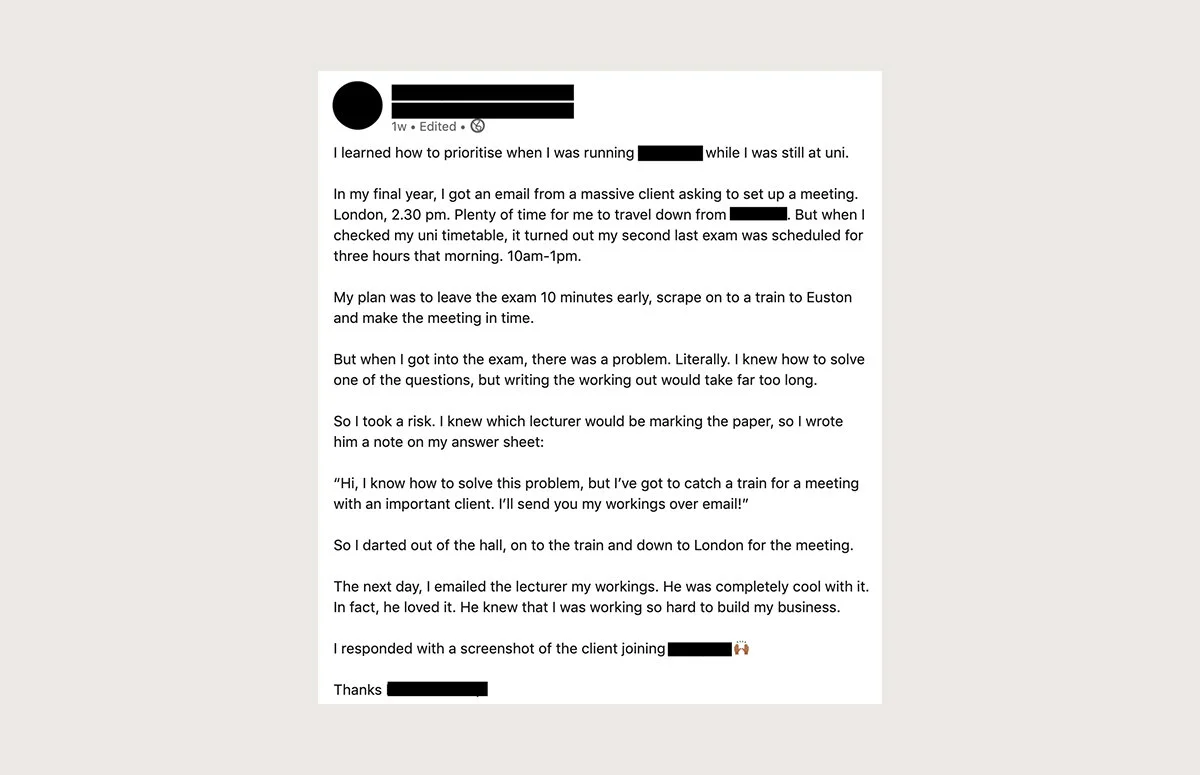
The substance of a broem is typically a career anecdote (or, more rarely, a personal one). It’s often a story about achieving improbable success under difficult circumstances. Broems offer a sprinkling of drama in an otherwise—let’s face it—pretty bland and boring LinkedIn feed. But where thoughtful storytellers reflect on the decisions they made and the lessons they learned, broets portray themselves as heroes who can do no wrong.
This one, in particular, sounds a bit far-fetched, especially considering how seriously universities take academic dishonesty. And even if it did happen, what’s the takeaway for the reader? It almost sounds like the writer is saying, I’m special, so university regulations don’t apply to me. Instead of offering insight, the broem becomes an outlet for the writer to humble brag about their achievements. (Side note: It’s totally okay to brag about your achievements on LinkedIn. But if you couch them in a long-winded story that’s pretending to not be a brag, it’s transparently disingenuous.)
4. Formatting: Short, simple sentences with frequent line breaks
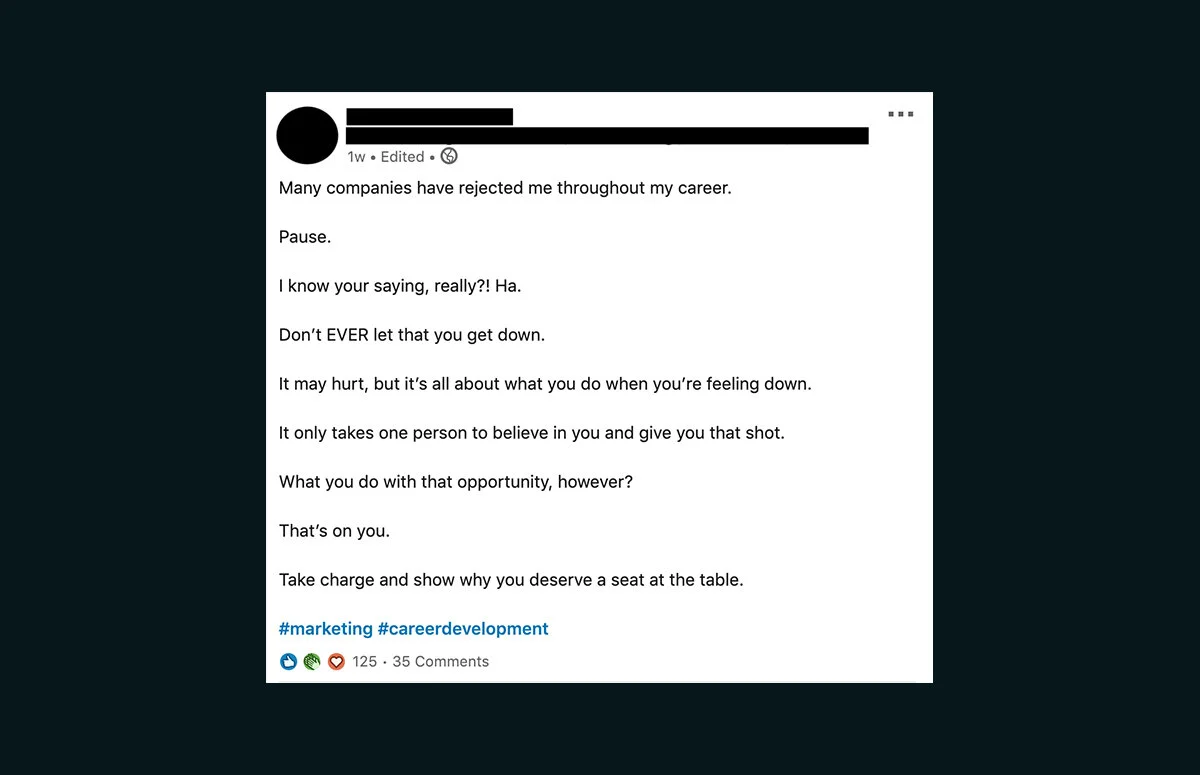
Thanks to the odd line spacing, broetry looks like, well, poetry. The simple, sentence fragment-y format of the broem is reminiscent of the unfussy style of poets like William Carlos Williams and e. e. cummings—but devoid of the poets’ playfulness or nuance. Where those poets used simple language to evoke powerful images and allude to themes without stating them outright, in a broem, there is no deeper meaning. The content is entirely surface-level.
5. Closing line: A clichéd life lesson or quasi-inspirational thought for the reader

Broems often read like fables for career-minded adults. And like good fables, they summarize the moral at the end of the story. Sometimes, like in the example above, this is a lesson: “Change your mindset to change the world!” Other times, it’s an inspirational question. Still other times, it’s just a repetition of the opening sentence (remember “Everyone thinks they understand marketing”?). In any case, there’s a high probability the “lesson” is not a new or enlightening insight, but an overused cliché.
While exceptions do exist, I’ve found that the majority of broems exhibit most, if not all, of these five characteristics. If it checks four or five boxes, it’s probably a broem.
Is it a broem?
- Is it posted on LinkedIn?
- Does it start with a clickbait-y, one sentence opener?
- Does it feature an emotionally-charged anecdote that portrays the subject in an overly flattering light?
- Is it formatted in short, simple sentences with frequent (and unnecessary) line breaks?
- Does it end with a clichéd life lesson or quasi-inspirational thought?
Now we have a working definition of what broetry is, but we’re left with more questions than answers. Where did this bizarre format come from? Why has it become so widely proliferated?
We’ll tackle that in the next section.
An important note before we continue: Is broetry a gendered phenomenon?
As the name might suggest—and as my highly unscientific survey of LinkedIn broetry confirms—broetry seems to be primarily written by men. That’s not to say that women or nonbinary folks can’t write broetry. In fact, I have found several examples from non-male writers; however, these seem to be the exception, not the rule. The overwhelming majority of broems I’ve viewed and analyzed in the course of my research for this article were male-authored. The reasons why men might be more inclined to write broetry could be the subject of a whole other article, but my theory is that it’s related to the known phenomenon that men tend to overestimate their abilities, while women tend to more accurately assess—or even underestimate—their skills. (I only call out women specially here because that’s what the current research focuses on. The same might very well be true for nonbinary folks, but we don’t have the data to back it up yet).
A broem by any other name
The earliest instances of broetry started cropping up in the fall of 2017 when the format was propagated, if not outright created, by Josh Fechter: a self-described growth strategist and former top Quora writer. (According to BuzzFeed, he was once suspended from LinkedIn for attempting to connect with more than 800 people in 24 hours). If the broem can be said to have a founding father—er, brother—Fechter is it.
Soon, BuzzFeed reporters Ryan Mac and Alex Kantrovitz started investigating. It was in the course of their research that Lorcan Roche Kelly helpfully supplied the term “broetry,” which the reporters popularized in their December 2017 article, People Are Flooding LinkedIn With Strange Stories. We’re Calling Them Broetry. (Later, it was also covered by Reuters and Forbes). At the heart of their story? Josh Fechter.
Fechter is as fascinating as he is mysterious. The erstwhile king of LinkedIn is no longer active on the platform—when you search for him, his account appears to have been deleted. But by whom? Himself or LinkedIn? I wasn’t sure until I discovered an old case study where Fechter reveals the truth: “LinkedIn banned me from their platform when I reached over 70,000 followers and 200 million views.”
But he hasn’t just disappeared from LinkedIn. He no longer works for the agency he co-founded, fittingly named Badass Marketers and Founders (or BAMF for short). On Medium, he goes by “That Writer,” rather than using his real name. The vestiges of his former life as LinkedIn’s most prolific broet have been reduced to a handful of old blog posts and a single sentence on his homepage: “I was credited with breaking LinkedIn's feed algorithm by LinkedIn's engineering team.”
I reached out to Fechter for comment. He responded, “I rather not touch upon any of my experience with LinkedIn.”
And I don’t blame him—his online disappearing act seems to indicate that he wants to leave his broetic notoriety behind him. But even without actively participating, Fechter still influences the way people post on LinkedIn. His post style has informed a legion of copycat broets.
When they first investigated the trend, BuzzFeed reporters Mac and Kantrovitz speculated that broetry was little more than a passing fad—a weakness in the LinkedIn algorithm that unscrupulous digital marketers were exploiting to garner unprecedented engagement. “With so many people trying to game the platform, LinkedIn feeds are now flooded with broems and it may be only a matter of time before the Microsoft-owned social network cracks down,” they wrote. And LinkedIn did, in fact, crack down by introducing a new feed ranking optimization function that would reduce the influence of viral writers (like Fechter) and give more priority to posts by people’s close connections.
Yet years later, in spite of these algorithm tweaks and long after its own inventor was forcibly removed from the platform, broetry is still alive and well. Why is that?
Why does broetry work?(And what can writers learn from it?)
While LinkedIn has taken steps to mitigate the kinds of extreme engagement writers like Fechter were generating in 2017, broetry might still play favorably to the algorithm—even if your potential audience is more limited.
We know that the LinkedIn algorithm—like most social networks—prioritizes “relevant” and “engaging” content. That is, the kind of stuff that gets people to comment and keeps them on the platform longer. Given that broems tend to be longer in length, are usually self-contained (i.e. they don’t link out to other sites), and crucially, get people talking, the LinkedIn algorithm may give them a boost.
But that doesn’t explain why people read—and comment—in the first place.
I would argue that while the algorithm certainly plays a role, the bulk of broetry’s success can be attributed to good writing advice taken too far. Remember the parts of a broem that I broke down in our definition above? Let’s have a look at them again. We’ll see what broets are doing to get their readers’ attention, why it’s a short-lived strategy at best, and what great writers do better.
HOW BROETRY DOES IT:
A click-baity, one-sentence opener.
Ever since you started writing in school, your teachers probably told you to start with a hook—something to capture your reader’s attention and motivate them to keep reading. This isn’t bad advice. It’s a well-documented writing strategy that takes advantage of something called the “curiosity gap.”
“The curiosity gap is the space between what we know and what we want or even need to know,” explains Copyhackers. It’s why people click on broems in the first place. Why does a CV gap not matter? What is the secret to prioritization? What makes people think they understand marketing, when they evidently don’t? Inquiring minds want to know.
The problem is, these hooks rarely deliver on the promise they make to their readers.
Think of it this way. Do you remember back in the early 2010s, when clickbait-y headlines à la BuzzFeed and Upworthy were all the rage? You know, articles with titles like “Baby Ducks See Water For The First Time—Can You BELIEVE What They Do?” (a real article, btw). These “shocking” titles worked for a while, until people got exhausted by them. The payoff was never as good as the title promised. Just take the article above. The “UNBELIEVABLE” thing the ducklings do is ... splash around in the water. Sure, it’s adorable, but not wholly unexpected.
When people stopped taking the (click)bait, Upworthy’s site traffic declined dramatically, and they changed their approach: In 2015, they ditched the “shocking” headlines and started to focus on telling better stories.
Right now, broetry is still in the circa-2012 clickbait honeymoon phase and people are still clicking. But that won’t last forever. Eventually, people will get tired of the audacious claims that LinkedIn broets make too.
Strong openers are good. But only if the hype is equivalent to the payoff.
What great writers do better:
Don’t make claims you can’t substantiate later. Sure, it might hook more readers in the short term, but it’ll damage your reputation in the long run. If you dupe people, they’ll learn quickly they can’t trust you. And if people don’t think they can trust you, why should they pay attention to you? They’ll unfollow your content and stop reading.
Use the “empty suitcase method” to write more effective—and accurate—hooks. The idea is that you write a sentence that alludes to what you’re going to talk about, without giving all your secrets away. It’s like telling someone about the suitcase you’re holding without opening it up and showing them what’s inside. For instance, instead of “Everyone thinks they understand marketing,” you could try, “Marketers, do you ever feel misunderstood?” It’s a subtle difference, but an important one. (The content matters too—a laundry list of complaints might be cathartic, but it’s likely more effective to share strategies for explaining what marketing does to non-marketers).
HOW BROETRY DOES IT:
An emotionally charged, personal anecdote that paints the subject in an overly flattering light.
Personal stories can be incredibly powerful. Humans have been telling each other stories since we learned how to control fire—and it’s still one of our preferred ways to learn new information and connect with one another.
The problem with storytelling in broetry is that it’s static. The subject is two-dimensional. The writer uses the personal anecdote to make themself look good—robbing the story of any interesting tension, personal development, or real vulnerability that would allow the reader to connect with the story. Contently’s Joe Lazauskas makes this point exceptionally well in a blog post on tension. It’s addressed to brands, but the point applies to broets as well. “Unfortunately, many brands [read: broets] are allergic to tension,” he writes. “They want to tell a story in which things are always good. But that’s not only inaccurate—it makes for a terrible story.”
Reading broetry is like reading a version of Harry Potter in which the boy who lived is a powerful wizard from the start and defeats Voldemort on the first page. I mean, good for him, but it doesn’t make for an interesting story, nor does it provide any kind of lesson for the reader. (I think this is part of why broets resort to concluding their posts with such egregious clichés. There is no real takeaway—except perhaps, “be more awesome, like me”—so they substitute a pithy, inspirational idiom like “be the change.” But I’ll get into that in the final part of our analysis.)
Telling stories is a great way to connect with your reader and share your knowledge—but only if they’re real stories, not flexes. If you always come out looking like a hero who never experiences any hardship, you’ll start to undermine your readers’ trust and lose their engagement.
What great writers do better:
Be vulnerable. Tell stories of the hard-won lessons you’ve learned, not just the (highly edited) ones that make you look good. I love reading developer blogs for this reason—there’s no ego or self-aggrandizement, just an honest assessment of the problems and how they went about solving them. Try injecting this kind of raw honesty into your own writing. Your readers will value the authenticity.
Shift the focus. There’s nothing wrong with sharing your personal story if it helps illustrate a lesson or provides food for thought. But external sources—like scientific studies, historical anecdotes, or current events—also provide a wealth of storytelling material. Challenge yourself to tell stories where you aren’t the center of attention. (Hint: The secret is to make reading a habit. What you absorb will come out in your writing.)
HOW BROETRY DOES IT:
Short, simple sentences with frequent line breaks.
Broets would argue there's a good reason for their odd formatting style: It’s mobile optimized. An early BAMF blog post originally written by Fechter (now attributed to his co-founder Houston Golden) argues, “You’ve got to start writing for mobile devices ... No one likes long paragraphs on little screens. They harder (sic) to read, and they look long and tedious.”
It’s true that mobile optimization is important. Though, it’s important to note that, compared to other social platforms, LinkedIn actually has a high number of desktop users. Only 57 percent of LinkedIn traffic comes from mobile, compared to 98 percent for Facebook.
But even if LinkedIn’s site traffic was 100 percent mobile, I still wouldn’t recommend writing in the broetry style of single sentences separated by line breaks. Shorter paragraphs may be better for mobile readers, but single sentences with constant spacing is monotonous and repetitive. It’s no better than a giant wall of text.
In fact, I’d argue it’s worse, because you inhibit your ability to create tension with a short sentence or a sudden line break—you’re already overusing those techniques. It’s like making a speech where you drop the mic after every sentence. The first time, you make an impact. The second and third times, you lose the dramatic effect.
In 100 Ways to Improve Your Writing, expert Gary Provost illustrates why it’s important to vary sentence length:
This sentence has five words. Here are five more words. Five-word sentences are fine. But several together become monotonous. Listen to what is happening. The writing is getting boring. The sound of it drones. It’s like a stuck record. The ear demands some variety. Now listen. I vary the sentence length, and I create music. Music. The writing sings. It has a pleasant rhythm, a lilt, a harmony. I use short sentences. And I use sentences of medium length. And sometimes, when I am certain the reader is rested, I will engage him with a sentence of considerable length, a sentence that burns with energy and builds with all the impetus of a crescendo, the roll of the drums, the crash of the cymbals–sounds that say listen to this, it is important.
Short sentences are great. Line breaks are dandy. But if they’re the only building blocks in your post, you’ll start to sound dry and repetitive—and you’ll lose your reader’s attention.
What great writers do better:
Vary the lengths of your sentences and paragraphs. As illustrated so beautifully by Provost’s example, variety is what keeps writing interesting. You can write snappy, interesting prose—that will still appeal to mobile readers—by using sentences and paragraphs of varying lengths.
Use the “bite, snack, and meal” approach when writing for mobile. Different mobile readers want different things—some will only read the first sentence, others will skim, and still others will fully digest what you have to say. E-write suggests deliberately catering to these different “appetites.” Front-load key information for your “bite” and “snack” readers by including a message in your first sentence and summary of your points (or at least a roadmap of where the post is going to go) in the first paragraph. That way interested readers can digest the full “meal,” but biters and snackers still leave feeling satisfied.
HOW BROETRY DOES IT:
A clichéd life lesson or inspirational thought for the reader.
Broetry operates on the principle that your conclusion is just as important as your hook. As Fechter writes, “The last two sentences are almost as important as the first two. If people don't walk away feeling a strong emotion, then don't expect them to like, comment, or share your post.” I don’t disagree. This is good writing advice—if you want to leave an impact, end your piece with something compelling.
The problem with broetry is that it doesn't actually live up to this standard. Your average broem doesn’t deliver a true “aha moment” or even an authentic emotion most of the time. The takeaway is typically something obvious, like “don’t judge a book by its cover”—an overused cliché that doesn’t offer anything new to the reader.
While some broets coast along on this kind of pseudo-profundity, it’s not a long-term strategy. Most people won’t invest their attention to have someone tell them something they already know.
The tricky part, as I mentioned in my point about content, is this is a problem that’s created earlier on. You can’t end with something impactful if you don’t have anything interesting to say. But if you fix your content, the ending will take care of itself.
What great writers do better:
Build your conclusion on a great story. Great writers conclude their writing by evoking real emotions and/or providing true insight. This all comes back to the story you’re telling. If your post is full of fluff, your ending won’t be substantial. But if your content is solid, you’ll be able to offer a real takeaway to your readers. (They can tell the difference.)
Subvert expectations. Clichés make for ineffective endings because they’re broadly accepted as truth. Shaking up your readers’ expectations makes for a much more compelling narrative. Think: What’s something that everyone believes to be true, but is actually false? Try to write a conclusion that convinces your reader to change their mind.
Prose before bros
While broetry might garner engagement now, at best, it’s a short-lived strategy. To build an audience, you need to create trust with your readers. Instead of providing real substance, broetry uses a repertoire of cheap tricks to create the illusion of depth—but pull back the curtain and it’s all smoke and mirrors. It won’t be long before readers catch on.
To show you how much better these posts can be, I’ve taken the liberty of correcting the broems I’ve used in the examples above. With a few key tweaks, they’re friendlier, more readable, and much more enjoyable to consume.
See for yourself:

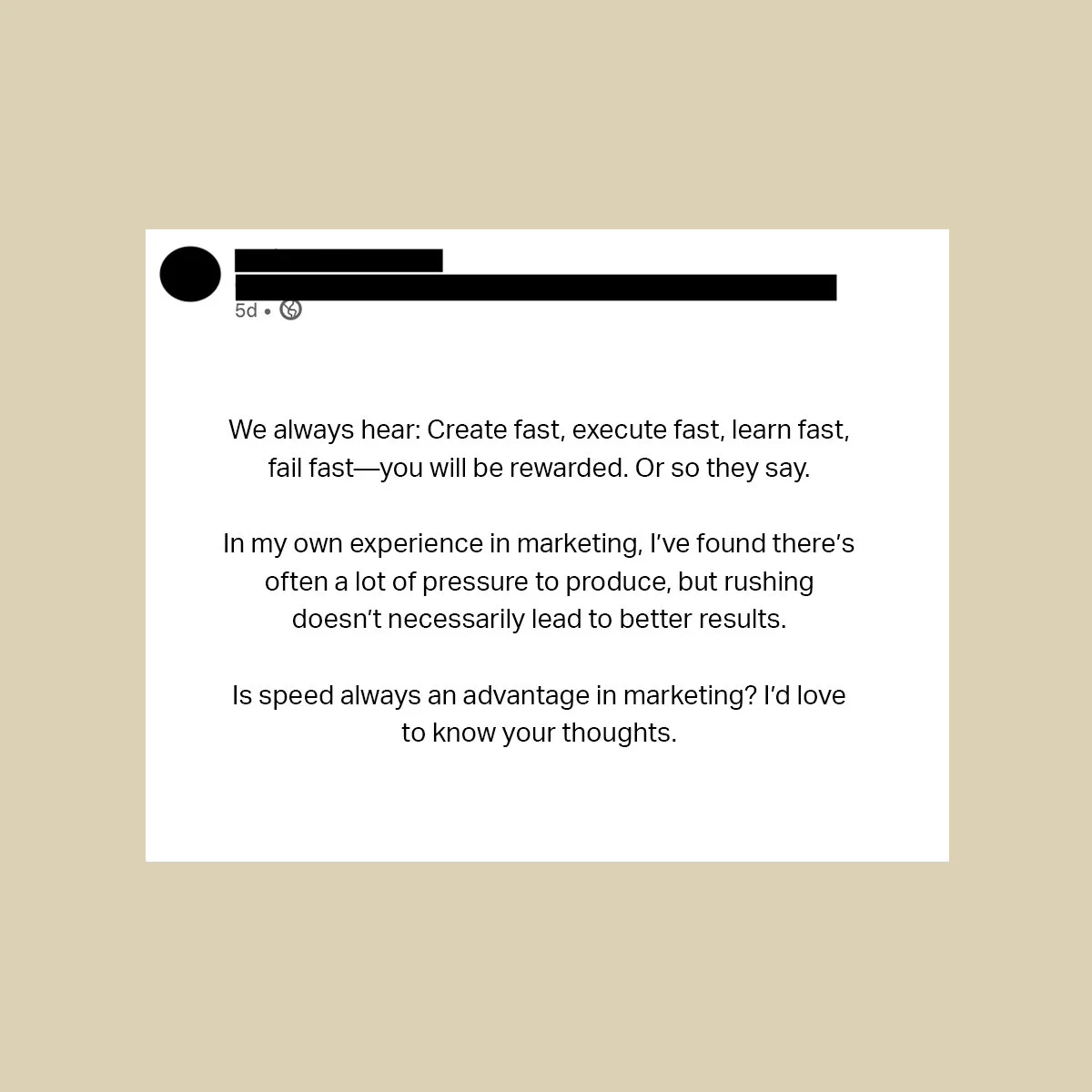
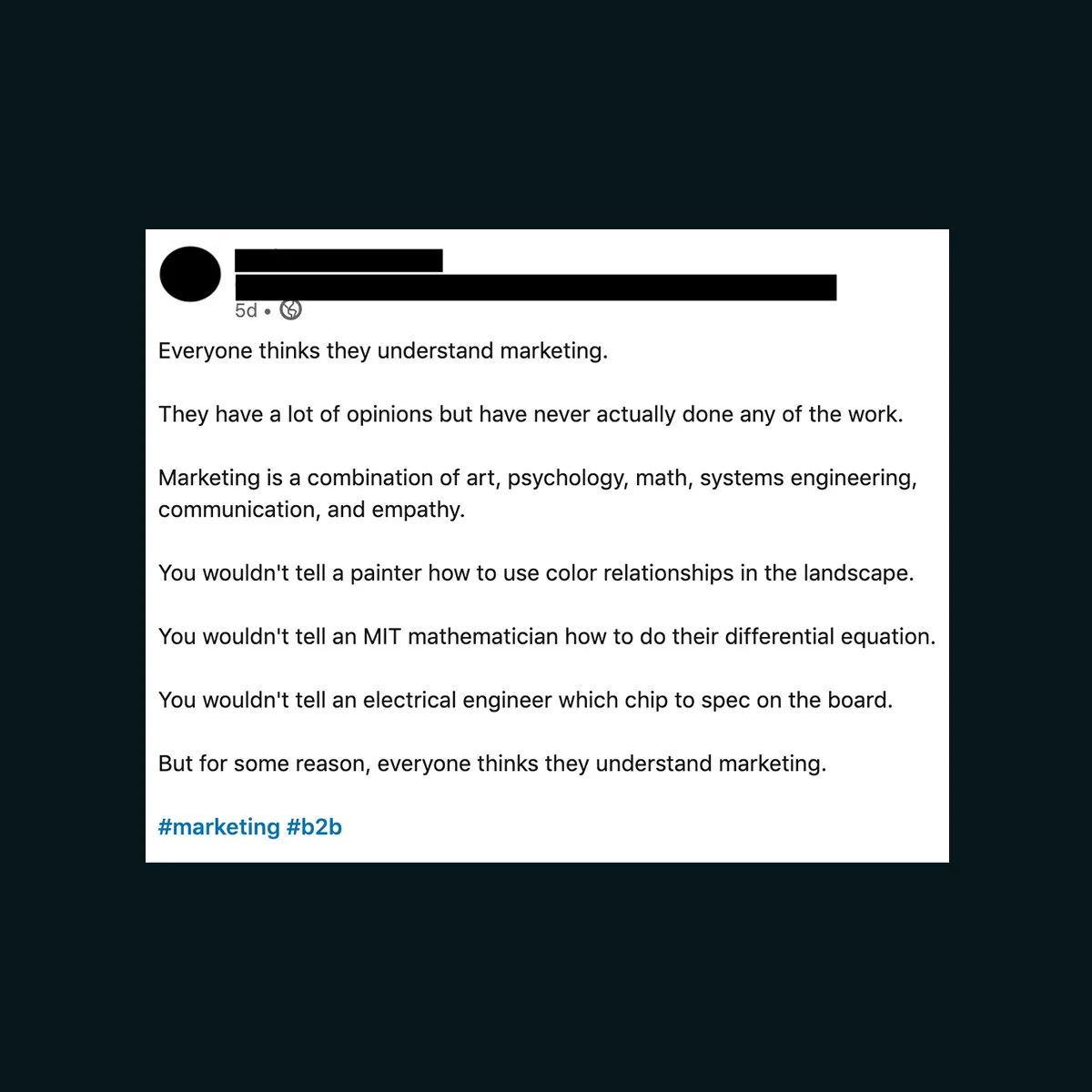
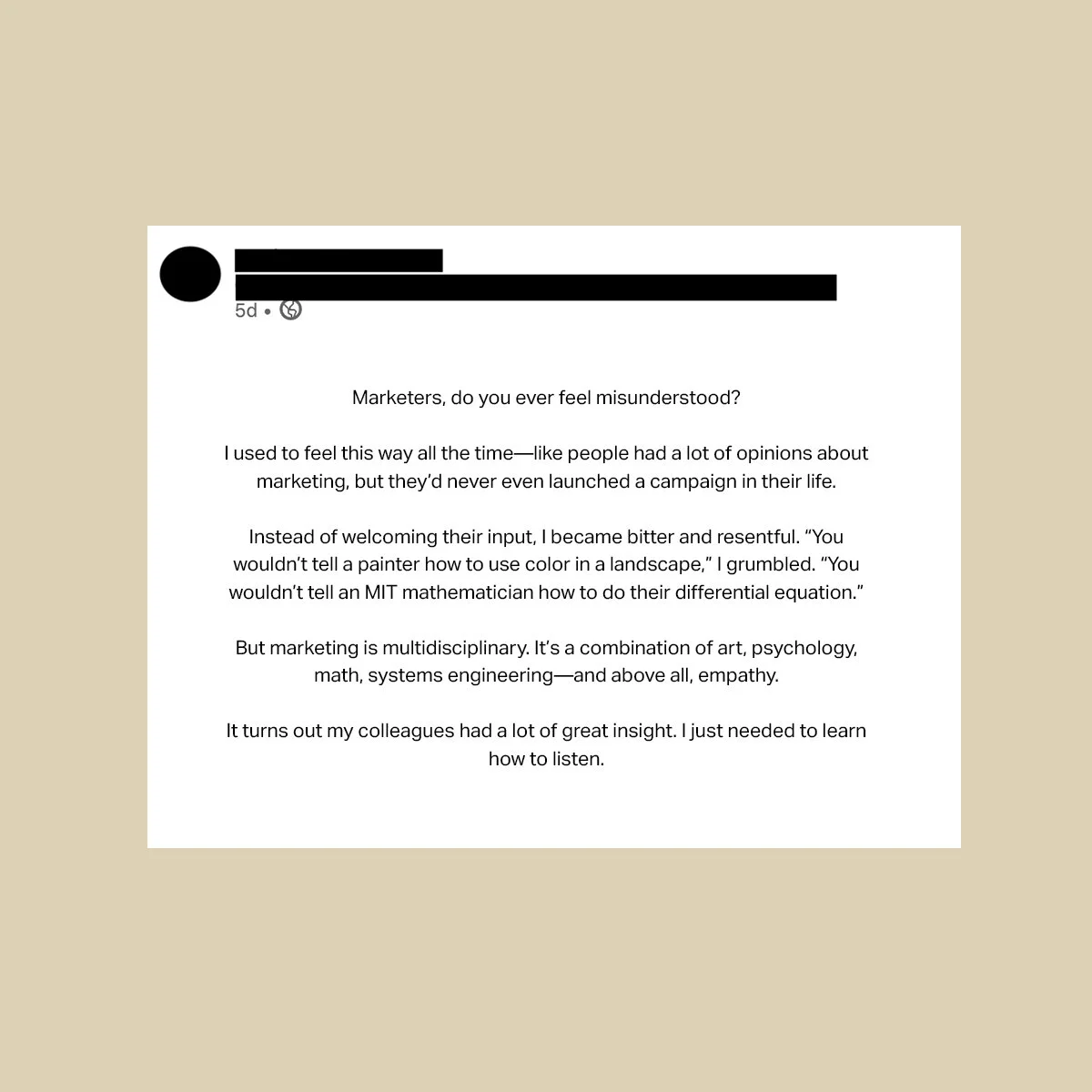
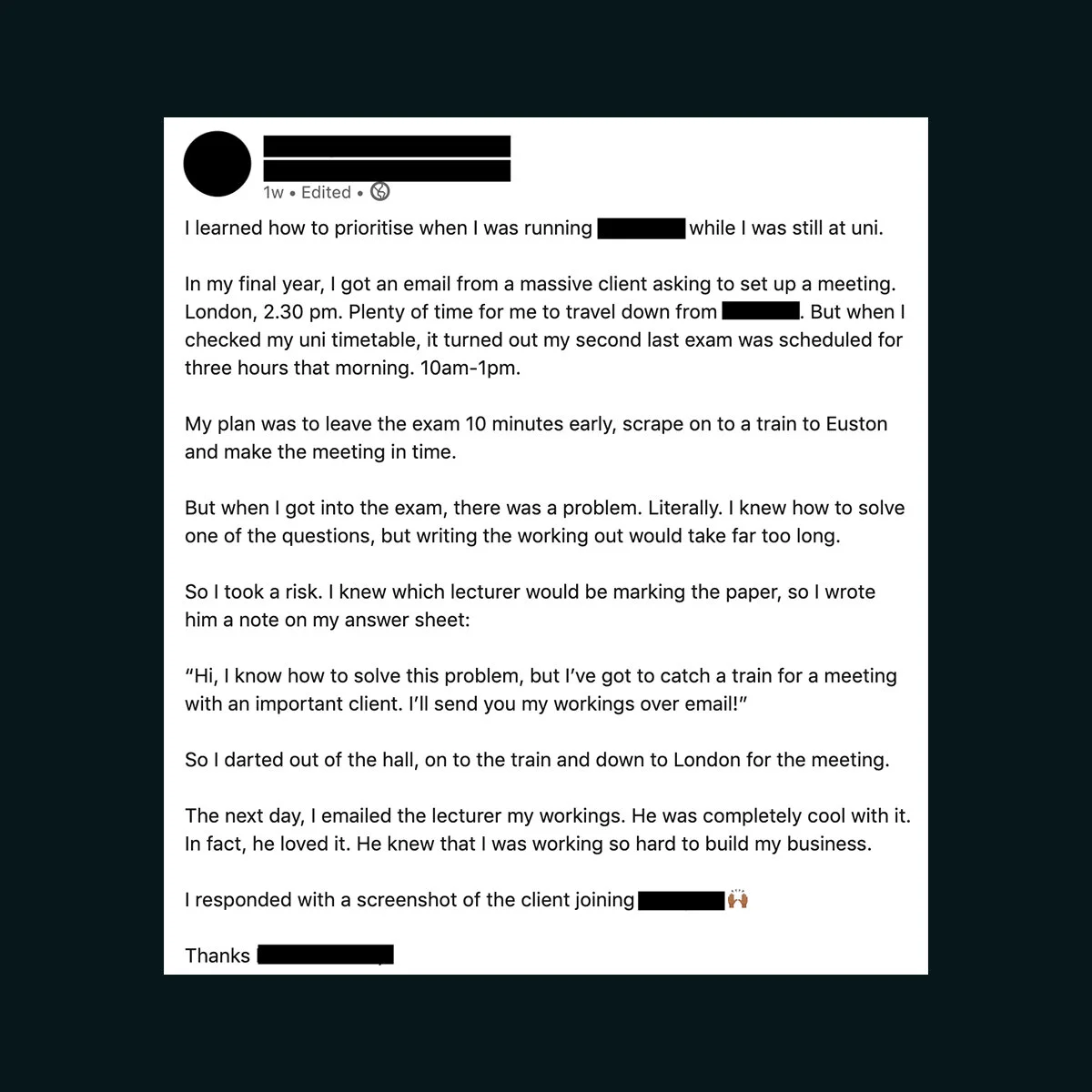
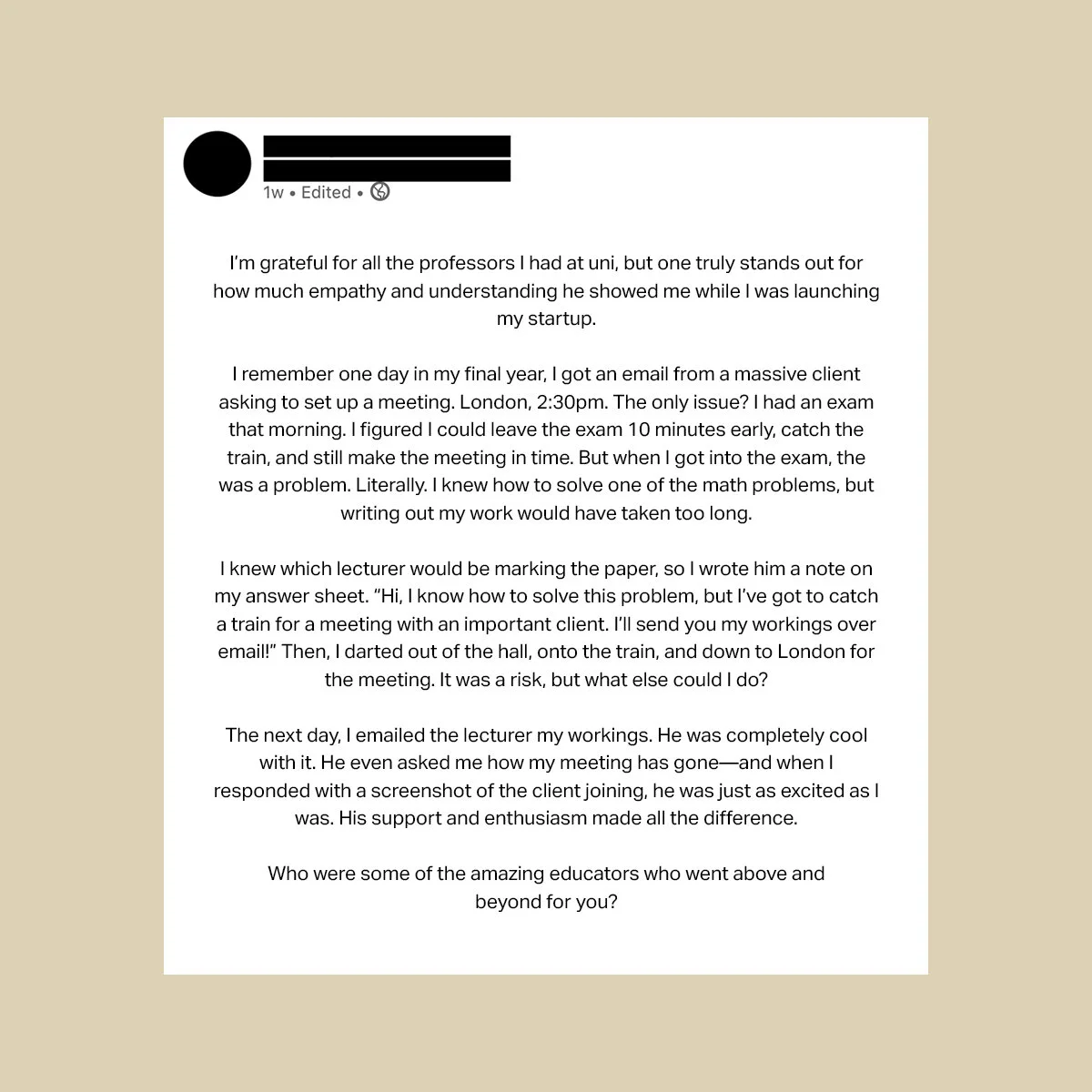
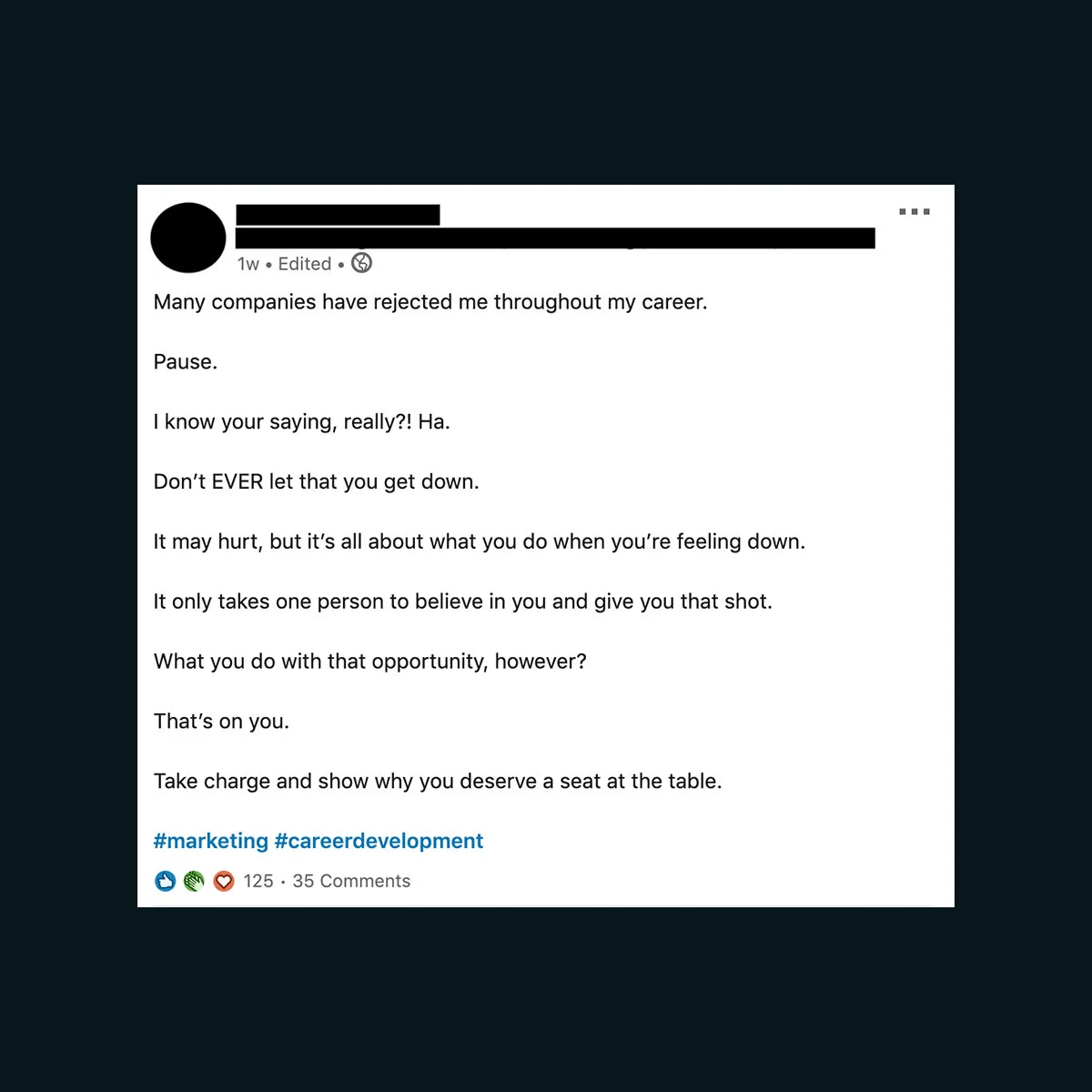

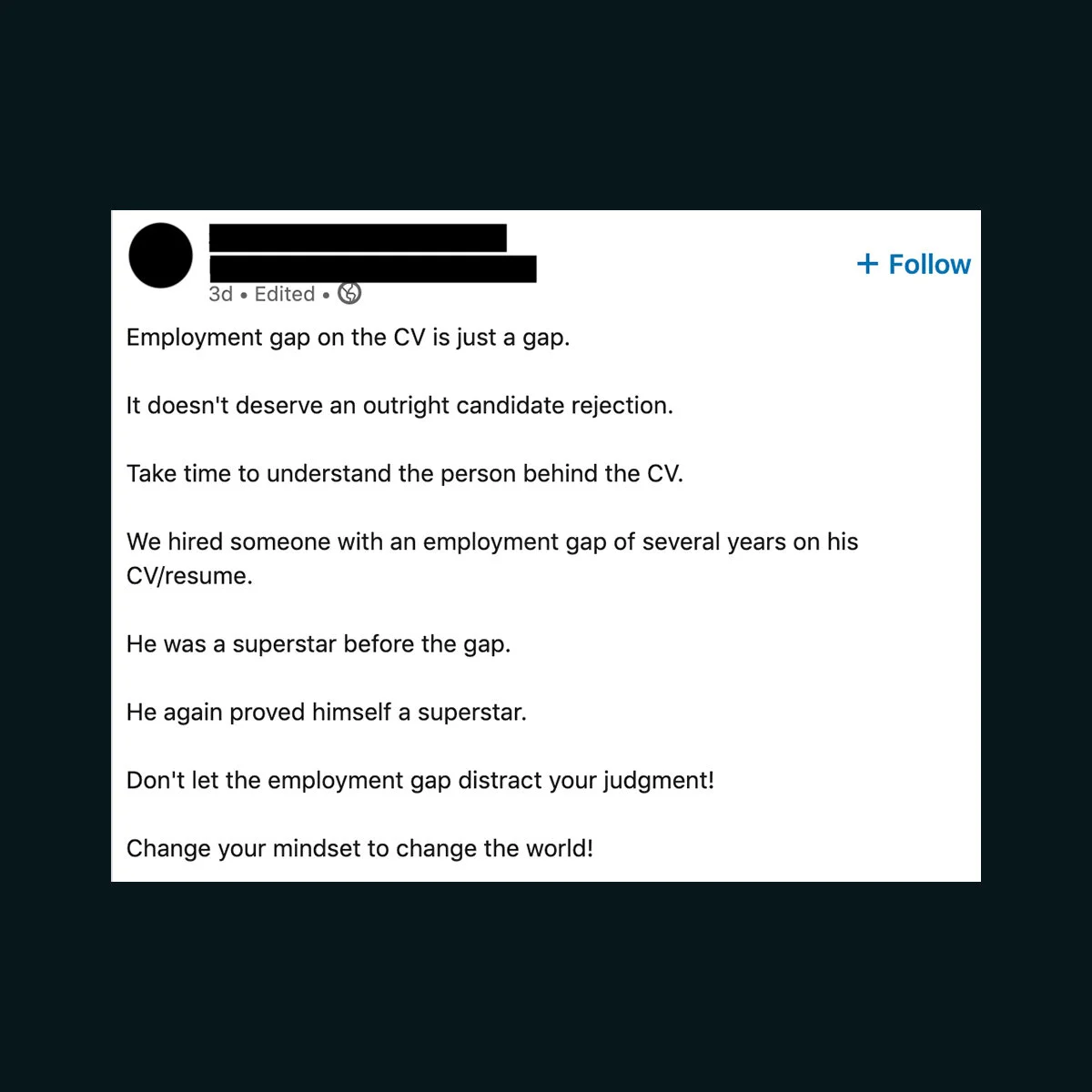

Broetry isn't going away—we'll continue to cover this story, and you can help. What should the next thing we create be?
1. Run a broetry rewriting contest
2. Hire slam poets to read broems aloud
3. Build an “AdBlocker” for LinkedIn broetry
We asked readers on Twitter: This is what they said (Poll no longer active)



